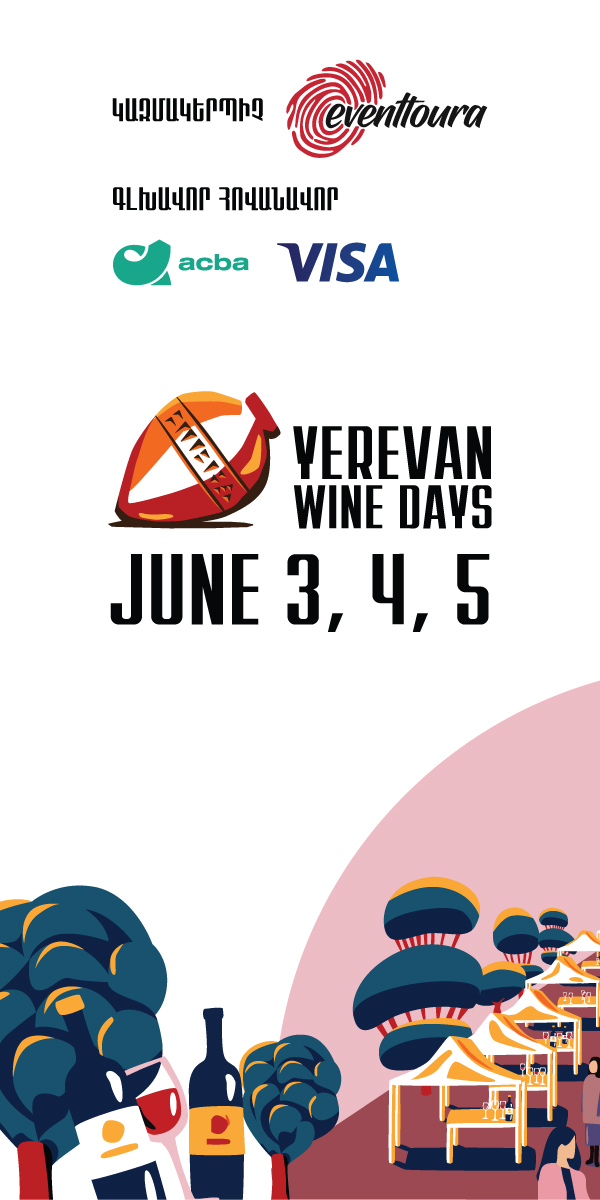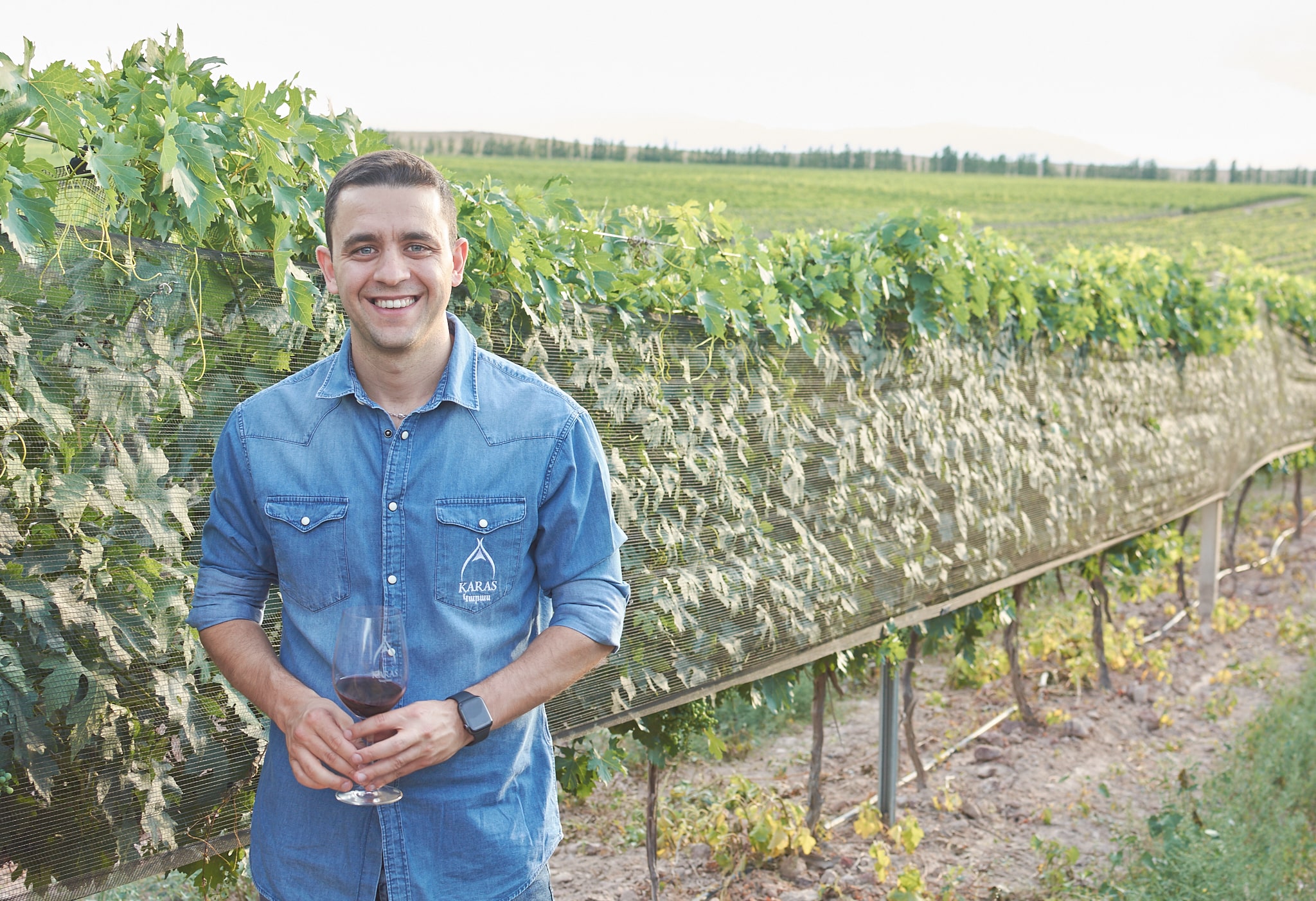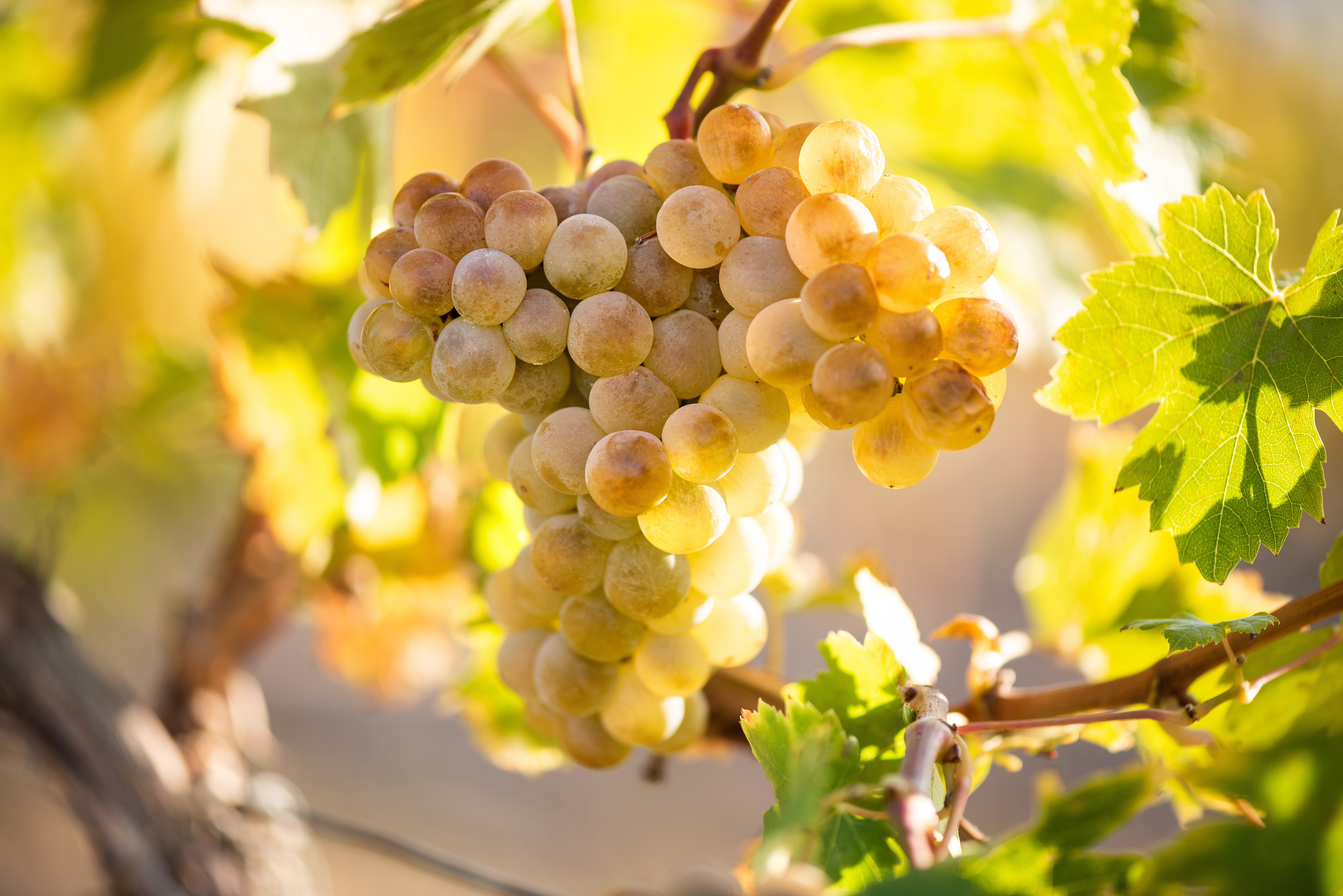Paul Hobbs: An Iconic Partnership
- By Lilia Khachatryan
- Translated by Hayk Khemchyan
- 21 April, 2022
Much has been written on Paul Hobbs, one of the most accomplished winemakers with over 40 vintages under his belt and wine projects spanning across four continents.
In this interview, Origins spoke to Hobbs about his discovery of Armenia and the genesis of Yacoubian-Hobbs Wines. With the world’s oldest winery, Areni-1, only a short distance from the vineyards of this partnership project, the wine visionary has no lack of inspiration on his mission to craft wines with a sense of place, focusing on the native jewel Areni.
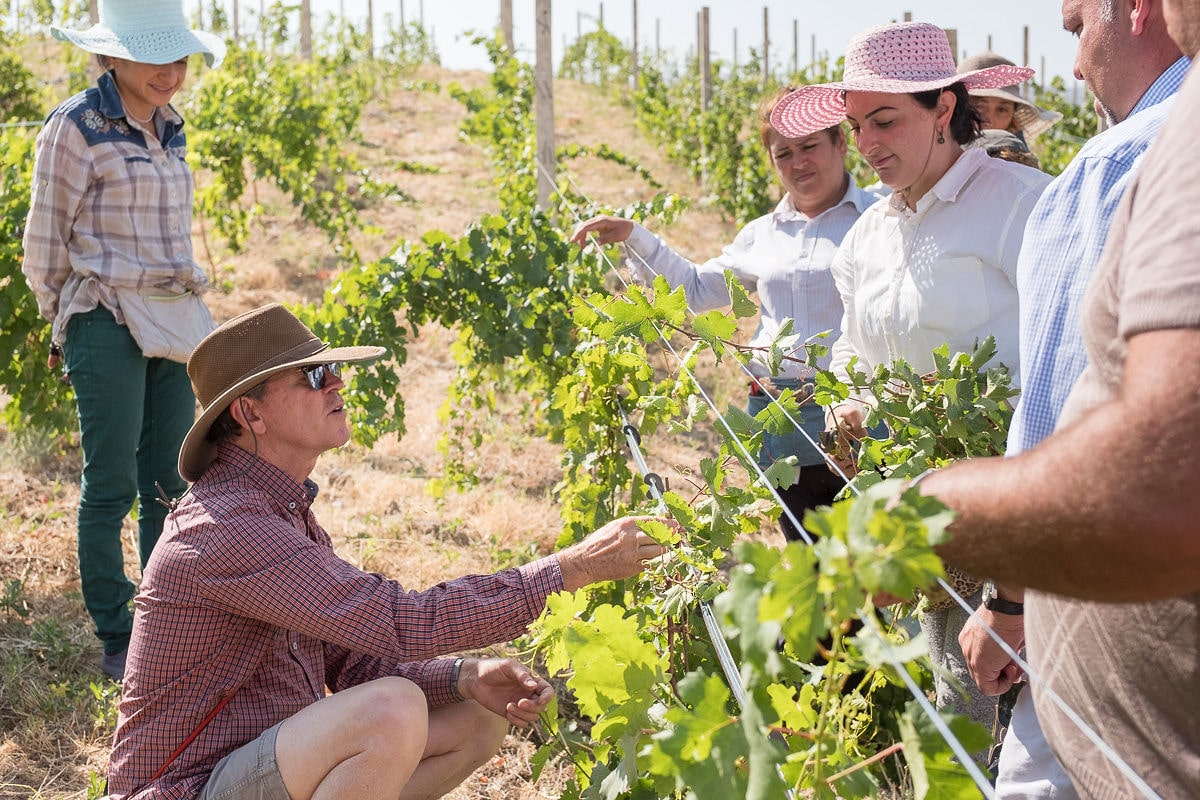
Winemaker Paul Hobbs (left) discussing the vine with local staff in Armenia’s Vayots Dzor region | Photo Credit: Paul Hobbs Wines
Origins: Did you have any prior knowledge of Armenia before going into partnership with the Yacoubians?
Paul Hobbs: When I pursued a master's degree at UC Davis in Viticulture and Enology at the beginning of my career, Armenia was not on my radar. Somehow it had not gained the credit it deserved for its millennia-old wine history, at least not fully. When I was consulting for Stag's Leap Wine Cellars in 2000 and 2001, founder and winemaker Warren Winiarski invited other winemakers who had supported him over the years and me to a retirement celebration. During the party, we each received a silver vial as a gift. Winiarski stated that it contained two withered seeds taken from an area where the Areni-1 cave was later excavated. It would have been hard to imagine at that moment that years afterward, I would plant a vineyard with my partners a stone's throw from Areni-1. It was such a fortuitous, poetic moment.
O: Your story of meeting the Yacoubians is no less interesting. Can you tell us about your journey to Armenia?
PH: In 2004, Viken Yacoubian, an avid wine collector and enthusiast called me late one night. I put my winery's phone number on the cork in those days. He left me a voicemail expressing his appreciation for a bottle of Paul Hobbs 2001 Cuvée Agustina Pinot Noir that he had [enjoyed] that evening at a restaurant near his home in Los Angeles. The next morning, my reply to his call was the start of a beautiful friendship that eventually led to me visiting Armenia and finally our partnership in 2008.
O: What were your first impressions of Armenia?
PH: A strange new world! I felt there was some resemblance to Hungary—where I had previously done extensive work—since both countries were formerly members of the Soviet bloc. But, on the other hand, Armenia struck me as very culturally and architecturally different. Yerevan is a sophisticated city with a long history and culture of gastronomy, and I like to connect great winemaking regions and their culinary cultures. The two go hand in hand. I remember being impressed by my first lunch. It was such a diverse and colorful experience--the table was eye-popping. There were many varied and assorted homemade dishes and the most flavorful fresh produce. No wonder folks were full of vitality.
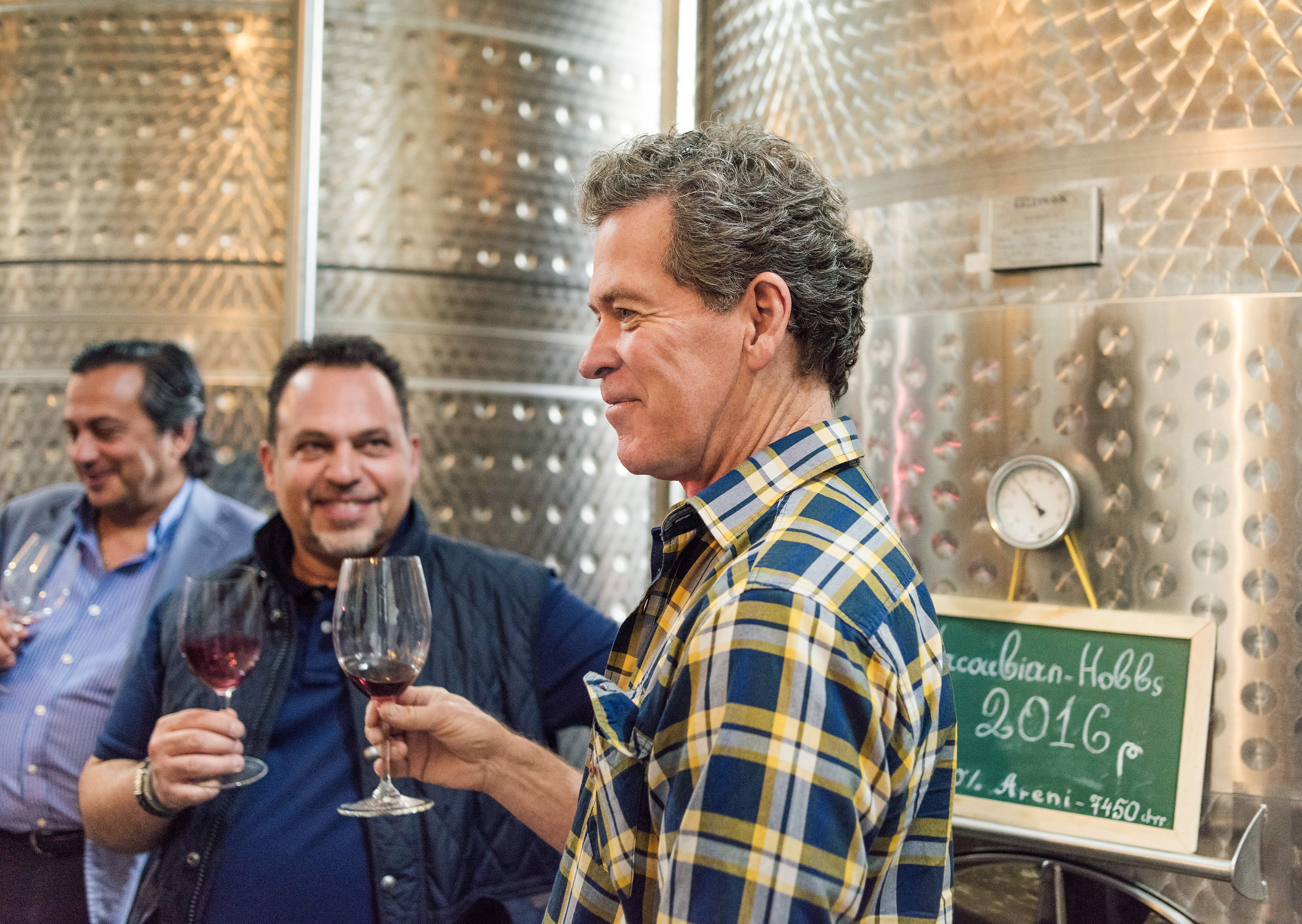
Paul Hobbs (right) and Viken Yacoubian (second from the left) enjoy the fruits of their joint labor at the WineWorks winery | Photo Credit: Paul Hobbs Wines
O: Selecting the location of a vineyard is crucial for a winegrower. How did you make your choice?
PH: We traveled from region to region. Tavush and Vayots Dzor appealed to me a lot—the terroirs amazed me. There were many indigenous varieties. Thanks to Vahe Keushguerian, we were given small lots to experiment with. Areni kept coming up. It has aspects I associate with noble grapes: texture and sophistication. Its character reminded me of Pinot Noir and Barbaresco. It has energy, bright fruit, and a long history. After two to three visits, we settled on the village of Aghavnadzor [in Vayots Dzor].
O: How many hectares do you farm, and what varieties have you planted?
PH: We are currently running about eight to 10 hectares (20 to 25 acres). Our focus is mainly on indigenous varieties—Areni is our favored red, with three or four white varieties for the white blend. Soils are limestone with mica minerals and volcanic rock—extremely well-drained, high elevation, and…mountain-goat friendly.
O: What are the challenges of managing a vineyard from afar?
PH: From halfway across the world, it's not an easy proposition. Videos and photos from the vineyards are handy in monitoring what's happening out there. Even if I'm in Europe, it can take a day to get, let's say, from Toulouse to Yerevan.
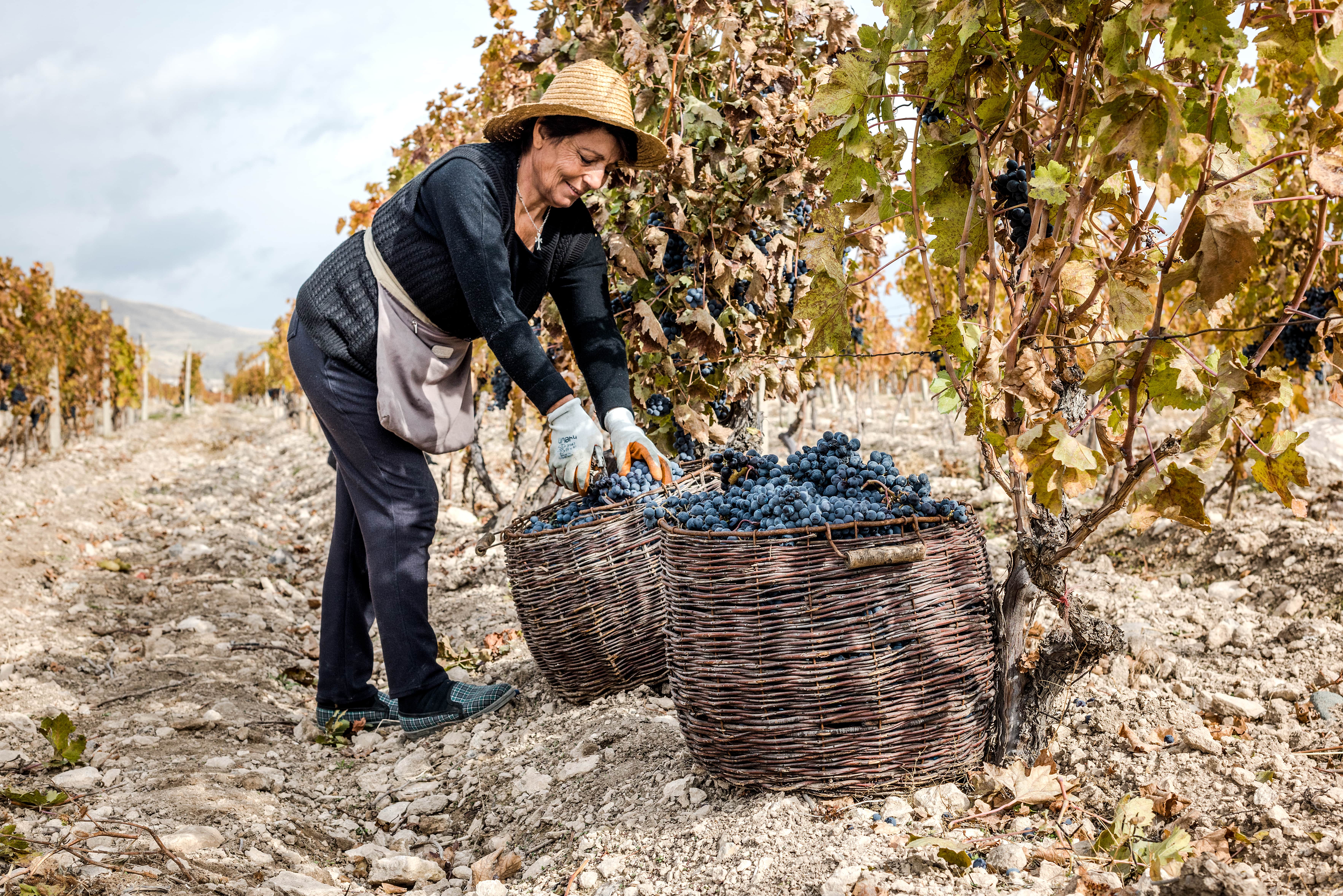
A woman picks Armenia indigenous Areni grape from the Yacoubian-Hobbs vineyards in Areni, Vayots Dzor | Photo Credit: Paul Hobbs Wines
O: What are your farming methods, and how do you find working with the locals?
PH: Our style is low-input farming, and it's largely organic. We use animal manure and compost; soils are alive and dynamic. We use local materials and methods in a modern way. For example, we took the area's classic concrete vine posts and modified them to mimic modern-day stainless-steel posts. We even installed specialized hooks to perform state-of-the-art VSP (vertical shoot positioning) canopy management. They're custom-designed, custom-made, and manufactured locally. And they'll last hundreds of years. People thought we were a little crazy because they were so expensive. More importantly, our estate vineyard is farmed by local women. I love these ladies—they're friendly, smart, detail-oriented, and care tremendously about their work. A-level and all about quality. They like showing me what they are doing when I'm around.
O: How many wines do you currently make?
PH: We make three wines: Sarpina, Areni, and a white blend, for a total production of 30,000 to 40,000 bottles a year. The Areni and the White Blend (predominantly Voskehat) are vinified and aged in stainless steel. The Sarpina is Areni aged six months in used, French-oak barrels,
less for the flavor but more for stability, structure, and to soften the tannins. Our [primary] market is currently the US, and happily, the wines are making noise. We are thrilled about the growing interest and consumer engagement. Currently, we are pleased to vinify our wines at WineWorks, a custom crush facility. However, our ultimate dream is to build our own winery high in the mountains alongside our vineyard, a stone's throw to the Areni-1 cave below.
O: How has working in wine in Armenia changed from when you started to now?
PH: A book could be written on that topic. In general, things have gotten easier. For example, initially, it [wasn't easy] to find well-trained local talent, and today that's rectified. What's remarkable is how rapidly that problem [resolved]. In addition, fine wine has been embraced and woven into the culture with festivals and wine shops; there's all this transformation occurring at lightning speed. The industry, too, has modernized across every discipline, from production to how it goes to market. That said, we have only scratched the surface.
O: How did you decide on the blend and vinification process for the White Blend?
PH: We ferment several unique traditional white varieties, and the best of these were brought to the table. Arman Manukian, our local winemaker, and I sit down at what we call a 'blending session.' It's one of many areas where science meets art. Next, we study each component and begin to form an idea of how any given 'lot' might contribute to the overall [product]. With practice, one gets quite good at foreseeing how seemingly disparate pieces can come together to make the whole much more exciting than the sum of its parts.

Vine rows from the Yacoubian-Hobbs estate overlook the village of Areni and the Areni-1 cave down below | Photo Credit: Paul Hobbs Wines
O: Are you looking to purchase any more properties or vineyards in Armenia?
PH: For now, we are still working on finishing planting out our existing vineyard. After that, yes, there is a good possibility to keep looking.
O: Do you have any plans for expanding the portfolio?
PH: Not until we have our own winery.
O: What would you like the US or international market to know about the Armenian wine market and culture?
PH: When it comes to wine, apart from Armenia's great historical importance (rich, storied culture and heritage), the wines made from its mountainous terroirs are breathtaking and unique in character and style. There are few places in the world where one can look back over 6,000 years of human civilization and follow it to modern times with such moving and compelling vividness. For this reason, visiting Armenia ought to be on every explorer's or adventurer's bucket list.
O: How does this project stand out from other Hobbs projects?
PH: Certainly, each place has its own story to tell—discoveries, hardship, challenges, opportunities, possibilities. Each new endeavor has proven to be a grand adventure, and while no two places are the same, when distilled to their essence, they are finally all the same in some rudimentary, fundamental way.
-
21 December, 2022
-
15 December, 2022
-
30 November, 2022
-
26 August, 2022
Similar Stories
-
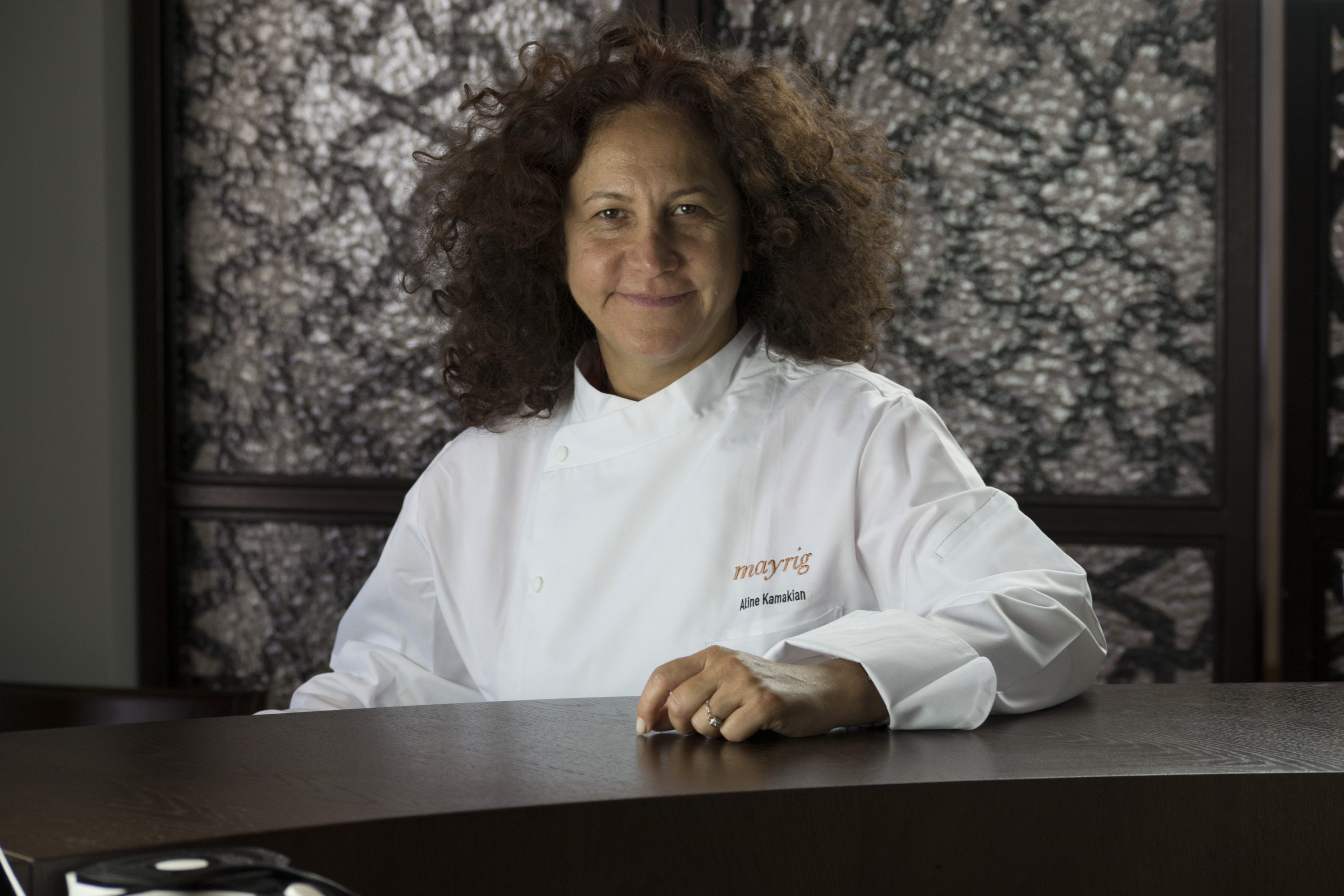 21 April, 2022The last 20 years have been busy for the Lebanese-Armenian female entrepreneur. She was born to genocide survivors from Tomarza and the Musa Dagh regions in Turkey who fled the Ottoman massacres to Beirut in Lebanon. The story of Mayrig began in 2003 when Aline Kamakian bought a dilapidated building in Beirut, Lebanon.
21 April, 2022The last 20 years have been busy for the Lebanese-Armenian female entrepreneur. She was born to genocide survivors from Tomarza and the Musa Dagh regions in Turkey who fled the Ottoman massacres to Beirut in Lebanon. The story of Mayrig began in 2003 when Aline Kamakian bought a dilapidated building in Beirut, Lebanon.


